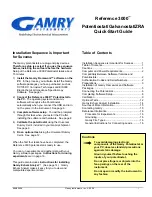
Command reference
R&S
®
ZNB/ZNBT
942
User Manual 1173.9163.02 ─ 62
Example:
Suppose that the active recall set contains an active trace no. 1.
CALC:MARK1 ON; MARK2 ON
Create markers 1 and 2 and assign them to the trace no. 1.
CALC:MARK:AOFF
Remove both markers.
Usage:
Event
Manual operation:
See
CALCulate<Chn>:MARKer<Mk>:BWIDth
<Bandwidth>
Sets the bandfilter level for a bandfilter search or returns the results. The command is
only available after a bandfilter search has been executed (
BFILter
; see example below).
The response to the query
CALCulate<Chn>:MARKer<Mk>:BWIDth?
contains the
following bandfilter search results:
●
<Bandwidth>
–
bandwidth of the bandpass/bandstop region.
●
<Center>
–
stimulus frequency at the center of the bandpass/bandstop region (the
stimulus value of marker M4).
●
<QualityFactor (3 dB)>
–
quality factor, i.e. the ratio between the center frequency
and the 3-dB bandwidth.
●
<Loss>
–
loss at the center of the bandpass/bandstop region (the response value
of marker M4 at the time of the bandfilter search).
●
<LowerEdge>
–
lower band edge.
●
<UpperEdge>
–
upper band edge.
Tip:
To obtain the <Quality Factor (BW)> result from the bandfilter info field, calculate
the ratio <Center> / <Bandwidth>.
Suffix:
<Chn>
.
Channel number used to identify the active trace
<Mk>
This numeric suffix is ignored and may be set to any value
because the bandfilter search functions always use markers M1
to M4.
Parameters:
<Bandwidth>
Difference between the band edges and the center response
value of a bandfilter peak; must be negative for a bandpass
search and positive for a bandstop search.
Range:
For bandpass: -100.00 dB to -0.01 dB; for band-
stop: +0.01 dB to +100.00 dB
Increment: 0.03 dB
*RST:
-3 dB
Default unit: dB
SCPI command reference
















































